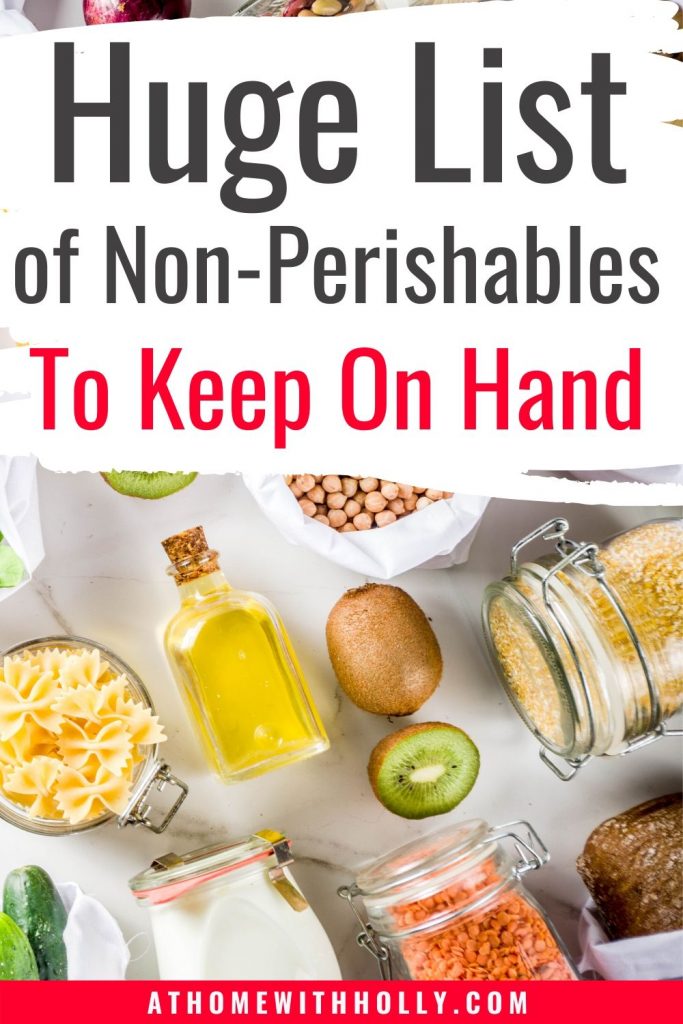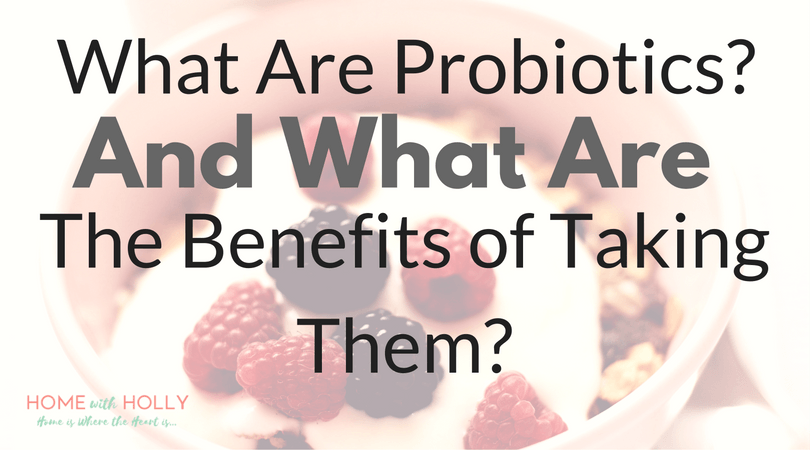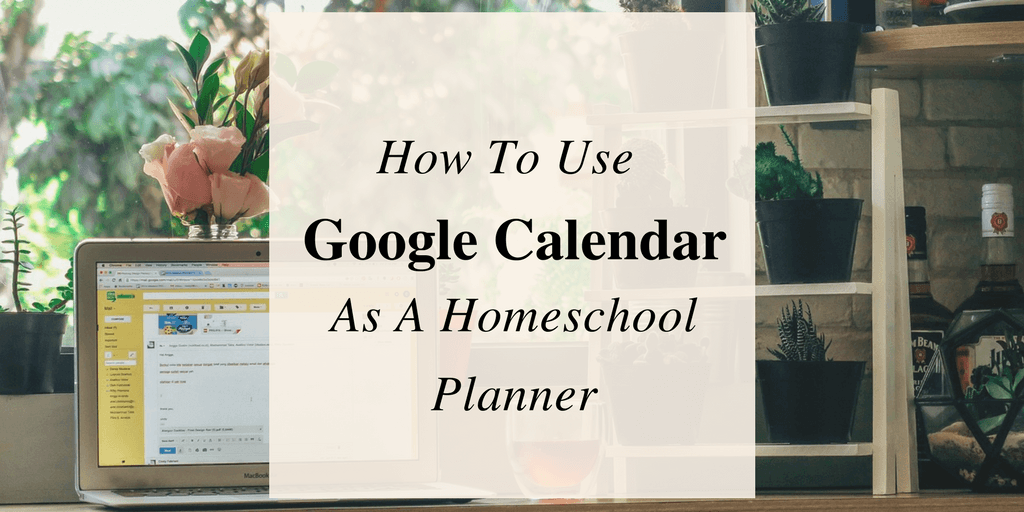Building Non-perishable Food Stores
Building Non-perishable Food Stores
If you are new to homesteading it’s likely you don’t have a ton of canned goods from previous years. Building food stores take time. If you’re like me, you would still like to keep a well stocked pantry of non-perishable foods.
There are many reasons to keep food on hand:
- Emergencies
- Less trips to the store
- Encourages eating at home
- Saves money (stocking up with sales)
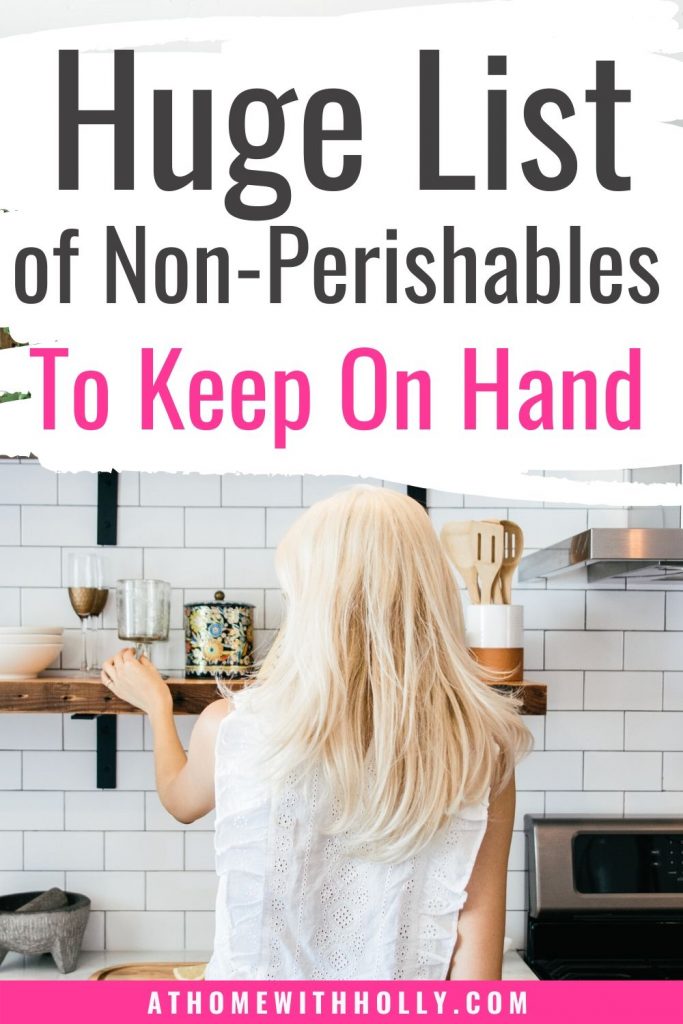
Growing Your Homesteading Efforts
We just started expanding our homesteading efforts this past year. We added 6 backyard chickens, then 4 more, and expanded our garden. We might only live on a quarter acre but I work at making the most of it.
Like I mentioned earlier since we are just expanding our efforts, there is a glaring lack of canned goods from the previous years gardens. While I am not an alarmist I have been through a few hurricanes and blizzards now. I personally want to be prepared.
As I grow my own canned food stores I am also working on slowly building an emergency supply of non-perishables to keep us in good stock should an emergency occur. I thought it might be helpful to share this list with you! Here is a list of non-pershable items I plan on stocking up on as I either find them on sale weekly or have a little wiggle room in the budget.
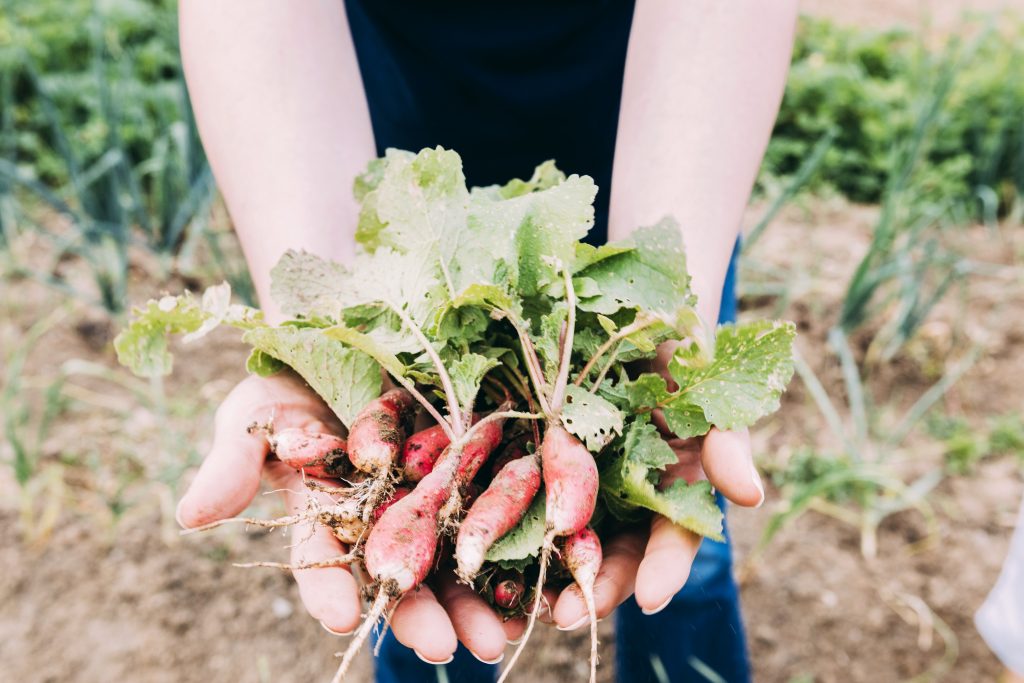
Non-Perishable Food List
Here are some ideas on things to stock up on that generally last for quite some time and don’t require refridgeration or freezing. Just make sure you store these items away from sunlight and temperatue fluctuations.
- Granola
- Granola bars
- Rolled Oats
- Steel Cut Oats
- Oatmeal Packets
- Canned Pears
- Canned Oranges
- Canned Peaches
- Canned Pineapples
- Canned Mixed Berries
- Canned Organic Corn (to avoid GMOs)
- Canned Carrots
- Canned Tomatoes in several forms (Whole, Crushed, Diced)
- Canned Asparagus
- Canned Articoke Hearts
- Canned Spinach
- Jarred Peppers
- Jarred Tomatoes
- Jarred Sauces (Tomato, Alfredo, Pesto)
- Jarred Gravys
- Canned Soups
- Canned Tuna
- Canned Chicken
- Canned Roast Beef
- Shelf Stable Milks
- Bouillon Cubes.
- Canned Broth
- Baking Supplies
- White Rice
- Dried Beans
- Canned Beans, since they are pressure canned, are the healthy option but also more expensive.
- Flour (White flour has the longest shelf life)
- Salt, Dried Herbs and Seasonings
- Beef Jerky
- Nut Butters
- Nuts
- Pastas in several varieties
- Dehydrated Potatoes
- Jam or Preserves
- Maple Syrup
- Honey
- Coffee
- Tea
- Hot Chocolate
- Stevia
- Sauces (Hot Sauce, Salsa)
- Condiments like Ketchup and other shelf stable favorites
- Powdered Mixes (Taco Seasoning, Onion Soup)
- Baking Mixes (Boxed Cake or Cookie mixes)
- Shelf Stable Meals (Pre-cooked Lentils, Rice Pouches, Ravioli)
Get a printable version of the list here:
Want a copy of the list?
Get a printable copy of this list sent to your email along with tips on living a healthier, slower-paced life at home!
Thank you!
You have successfully joined our subscriber list.


